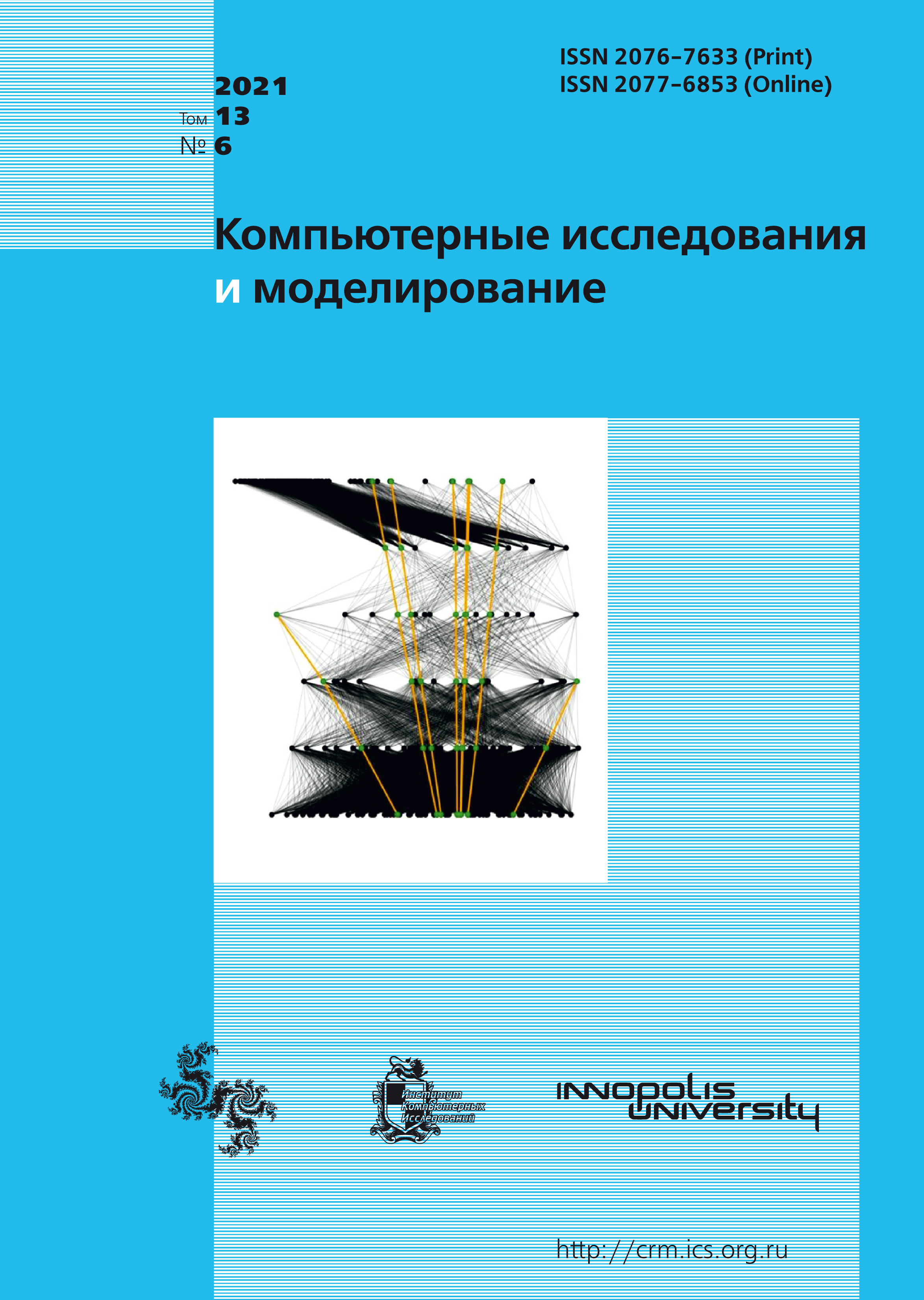All issues
- 2024 Vol. 16
- Issue 1 (special issue)
- 2023 Vol. 15
- 2022 Vol. 14
- 2021 Vol. 13
- 2020 Vol. 12
- 2019 Vol. 11
- 2018 Vol. 10
- 2017 Vol. 9
- 2016 Vol. 8
- 2015 Vol. 7
- 2014 Vol. 6
- 2013 Vol. 5
- 2012 Vol. 4
- 2011 Vol. 3
- 2010 Vol. 2
- 2009 Vol. 1
Models of phytoplankton distribution over chlorophyll in various habitat conditions. Estimation of aquatic ecosystem bioproductivity
 pdf (2717K)
pdf (2717K)
A model of the phytoplankton abundance dynamics depending on changes in the content of chlorophyll in phytoplankton under the influence of changing environmental conditions is proposed. The model takes into account the dependence of biomass growth on environmental conditions, as well as on photosynthetic chlorophyll activity. The light and dark stages of photosynthesis have been identified. The processes of chlorophyll consumption during photosynthesis in the light and the growth of chlorophyll mass together with phytoplankton biomass are described. The model takes into account environmental conditions such as mineral nutrients, illumination and water temperature. The model is spatially distributed, the spatial variable corresponds to mass fraction of chlorophyll in phytoplankton. Thereby possible spreads of the chlorophyll contents in phytoplankton are taken into consideration. The model calculates the density distribution of phytoplankton by the proportion of chlorophyll in it. In addition, the rate of production of new phytoplankton biomass is calculated. In parallel, point analogs of the distributed model are considered. The diurnal and seasonal (during the year) dynamics of phytoplankton distribution by chlorophyll fraction are demonstrated. The characteristics of the rate of primary production in daily or seasonally changing environmental conditions are indicated. Model characteristics of the dynamics of phytoplankton biomass growth show that in the light this growth is about twice as large as in the dark. It shows, that illumination significantly affects the rate of production. Seasonal dynamics demonstrates an accelerated growth of biomass in spring and autumn. The spring maximum is associated with warming under the conditions of biogenic substances accumulated in winter, and the autumn, slightly smaller maximum, with the accumulation of nutrients during the summer decline in phytoplankton biomass. And the biomass in summer decreases, again due to a deficiency of nutrients. Thus, in the presence of light, mineral nutrition plays the main role in phytoplankton dynamics.
In general, the model demonstrates the dynamics of phytoplankton biomass, qualitatively similar to classical concepts, under daily and seasonal changes in the environment. The model seems to be suitable for assessing the bioproductivity of aquatic ecosystems. It can be supplemented with equations and terms of equations for a more detailed description of complex processes of photosynthesis. The introduction of variables in the physical habitat space and the conjunction of the model with satellite information on the surface of the reservoir leads to model estimates of the bioproductivity of vast marine areas. Introduction of physical space variables habitat and the interface of the model with satellite information about the surface of the basin leads to model estimates of the bioproductivity of vast marine areas.
Indexed in Scopus
Full-text version of the journal is also available on the web site of the scientific electronic library eLIBRARY.RU
The journal is included in the Russian Science Citation Index
The journal is included in the RSCI
International Interdisciplinary Conference "Mathematics. Computing. Education"






